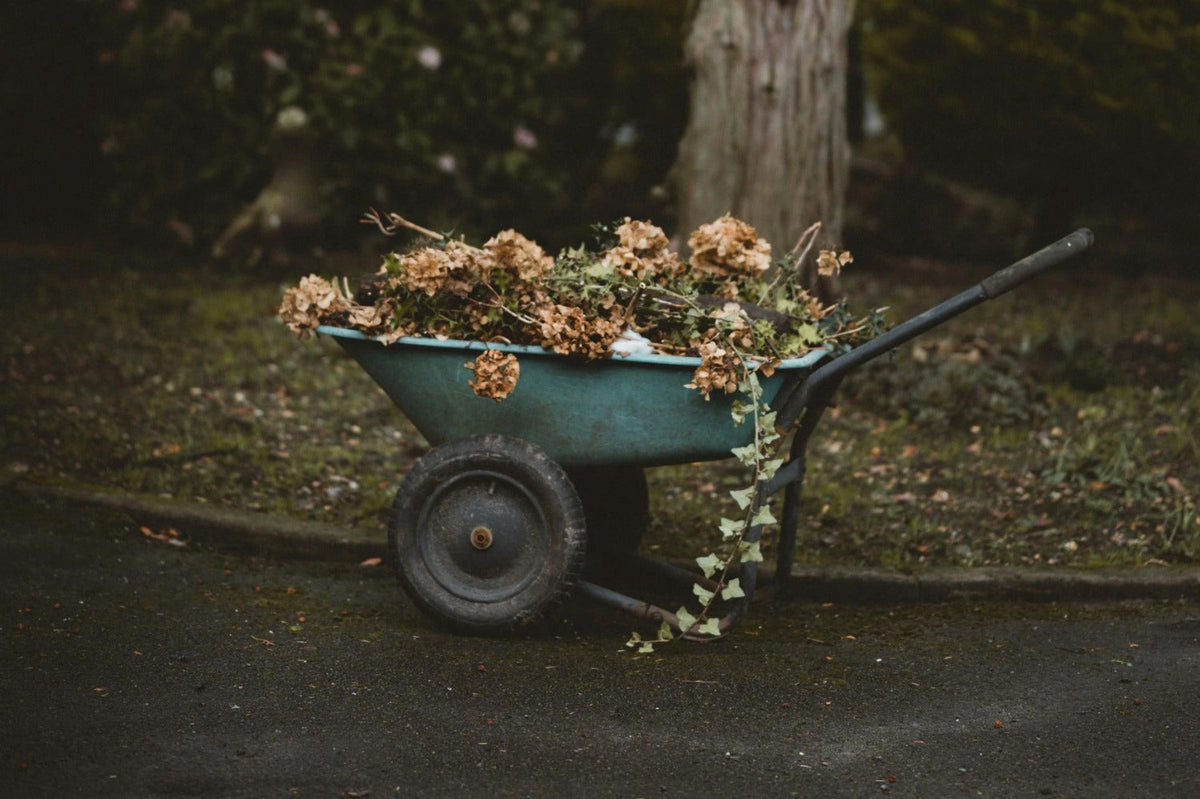
Cleaning up and pruning the garden in autumn: do's and don'ts
|
Tijd nodig om dit artikel te lezen: 3 min
|
Tijd nodig om dit artikel te lezen: 3 min
Autumn has arrived and it is very tempting to give the garden a good clean-up. Pruning shrubs and perennials, clearing away leaves and twigs: everything ready for winter. But is that such a good idea? Many animals need those garden leftovers to hibernate. And your soil also benefits from not being spick and span.
A good reminder to know whether you can prune a plant in the fall is this: if the plant blooms in the spring, keep your pruning shears off it. Camellias, for example, or spring-flowering clematis and forsythia and hamamelis or witch hazel have already formed new buds, so you would prune those away now.
Some plants should not be pruned in the fall, because their branches are too sensitive to survive the winter. You simply leave the faded flowers as an insulating layer and protection against harsh conditions such as frost and wind. Hydrangeas, for example, should only be pruned in early spring, just after the winter.
Faded flowers with seed pods are an interesting addition to the winter food of many animals. Examples include: Allium (ornamental onion), Echinops (globe thistle) or Eryngium (cross thistle), Hylotelephium (ornamental flower), Nigella (lady-in-the-mist), Phlomis (burning herb), Rudbeckia (coneflower) and Echinacea (purple coneflower). Only prune them after the winter.
Not everyone is in favor of faded shrubs or brown branches, but ornamental grasses are very beautiful when the frost covers them with ice crystals or when the winter light plays with the ears. Ornamental grasses are also pruned in early spring, just after winter.
Without razing every plant in your garden to the ground, you can prune here and there in preparation for the coming winter. The most important tip when pruning: always cut a branch or stem diagonally, at an angle of 45°, so that no water remains on the pruning wound.
Shrubs that have grown very full or densely during the past season, such as roses or jasmine, can be thinned out with pruning shears. You then remove a few branches here and there that are growing too close together, without pruning the entire shrub! This ensures more air circulation in the humid winter months and therefore less chance of mold and diseases. In addition, you make the shrub a little less heavy, so that it experiences less impact from strong winds or storms. Sometimes pruning is also necessary, as it turns out.
Many small fruits can be pruned now, such as black or red currants, summer raspberries, gooseberries and blackberries. For larger fruit trees , such as apples and pears, it is still much too early to prune. Their sap flows have not yet stopped and they are susceptible to diseases if you prune them now. The message is to wait until winter sets in. For stone fruits, the time to prune has already passed. You can prune them just after harvest, until mid-September.
Lavender can be pruned after flowering, in early autumn (September). Now only remove the faded flowers, the major (shape) pruning is for March. Rosemary can also be neatened before winter, but the major pruning is also for spring.
Most hedges are pruned for the last time in September, so that there is still enough time for the pruning wounds to recover from the first frost. Yew hedges tolerate a slightly later pruning and can also be pruned in October.
A garden in winter does not have to be spotless. A bare soil is more sensitive to the elements, so it is better to provide an insulating layer for it. And the animals in the garden can also use some hibernation spots.
Some faded perennials do not form sturdy stems with seed pods, but become a kind of brown mush in the winter. Persicaria (knotweed) for example or Alchemilla mollis (lady's mantle) can be safely cleared away in the autumn.
'Dirty corners' may seem like a no-go in the garden, but they are vital for the hibernation of many animals. Hedgehogs seek shelter under branches and leaves, but toads also like to hibernate in such places. Insects crawl away in faded flower heads or under leaves and stones. So don't go crazy clearing and pruning everything, but leave some garden waste here and there for the coming winter.
Make an insect tepee with branches, pruning waste and leaves. You then put 3 to 4 medium-sized branches in the ground that you can now prune. Connect them together like a tepee and tie them together with a rope at the top. If necessary, prune the branches to the same height. Fill the inside of the tepee with pruning waste, small branches and plant remains or leaves. Everything that you are now pruning together is good to use. You can even prune the stems of sunflowers shorter to incorporate them, animals like to hide in them. If necessary, tie some rope around the tepee or tepee, so that everything cannot blow away, and leave the rest to Mother Nature. A lot of insects will spend the winter there. Ideal to make with children. Prune and craft.



